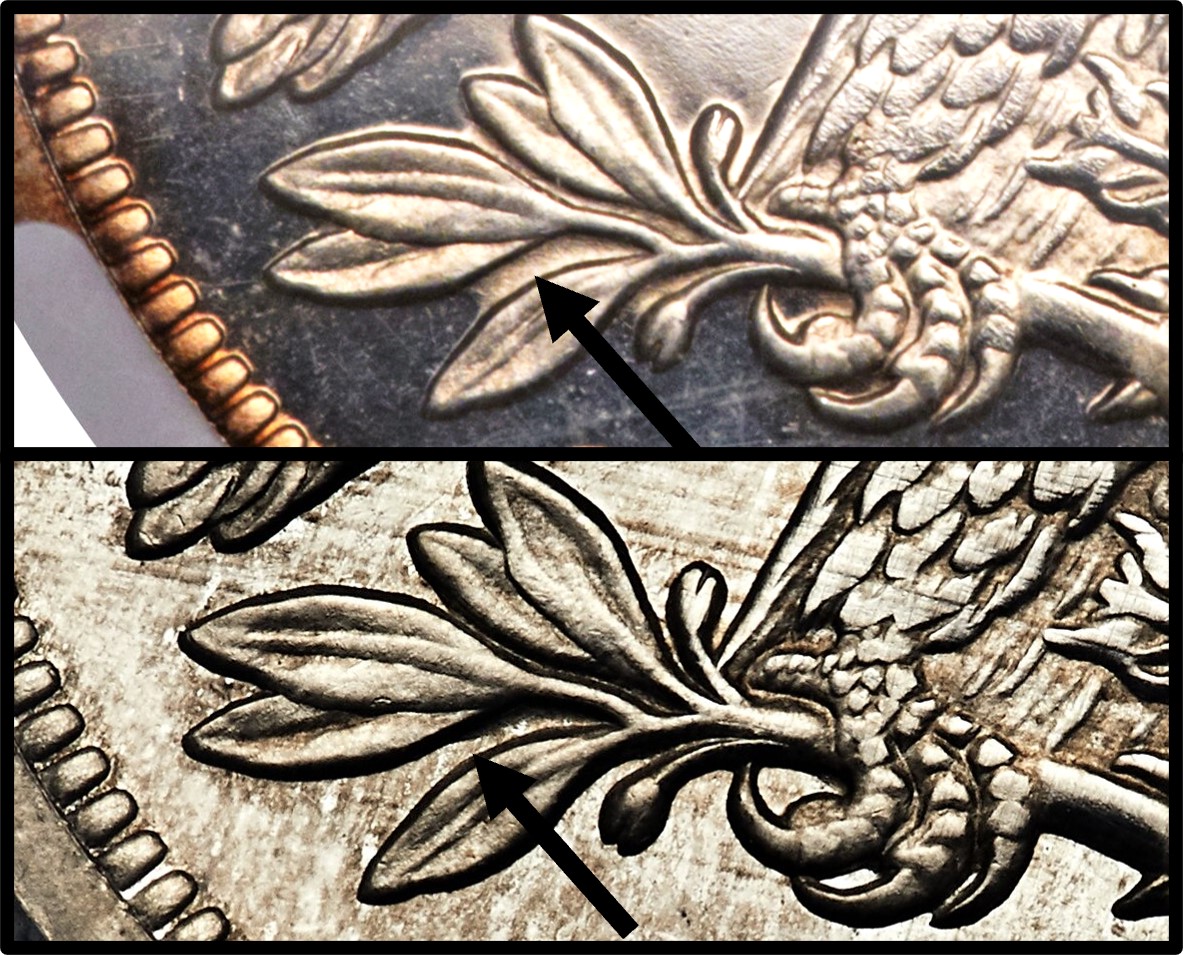|
|
Comments: This is the third and final use of Obverse P1 and the only use of Reverse PB in 1869. Reverse 1869 PB is transitional, used again in 1870 to strike 1870 OC-P2. |
Obverse P1 The photo below shows the Obverse P1 attribution grid.  1869 Obverse P1 attribution grid Obverse P1 has a small lump below the ear lobe that can aid in confirming attribution. This lump is usually visible since most proofs have strong detail, but it may be difficult to detect from a photo if the lighting isnít just right.  1869 Obverse P1 lump below the ear lobe
|
Reverse PB can be very difficult to distinguish from Reverse PA., but there are a few markers that can separate the two dies. Reverse PA exhibits die doubling on the left side of the motto. Reverse PB has only very minor doubling at the top of WE, and NO doubling on IN. Reverse PB has a tiny rust pit below the edge of the scroll above the left side of the R in TRUST. These features are shown on the photo below.  Reverse 1869 PB markers in the motto Reverse PB also displays a unique scribe line along the denticles above the ST in STATES. This line is shown in the photo below.  Reverse 1869 PB scribe line above ST A final marker to differentiate the two dies is the unfinished area between the lower and middle leaves. This area is much smaller on Reverse PA. The photo below contrasts the two die to show this difference.  Unfinished area between the leaves Reverse PB (above) vs. Reverse PA (below)
|
| Photo credits:
Obverse P3: 1869 PCGS PR61 (mis-attributed as a proof by PCGS), from the Osburn-Cushing reference collection. Reverse PA: 1869 PCGS PR63, from the Osburn-Cushing reference collection. Reverse PB: 1870 PCGS PR64, from the Heritage archives. |
